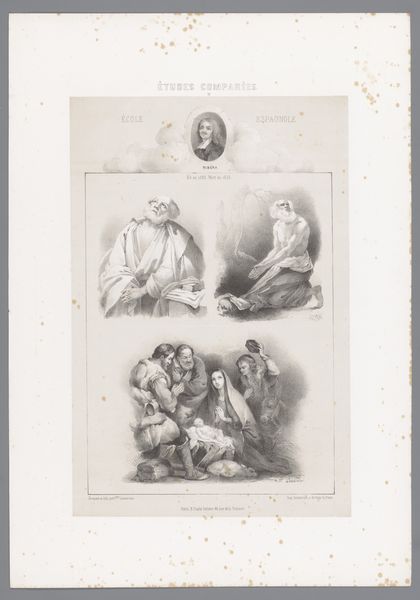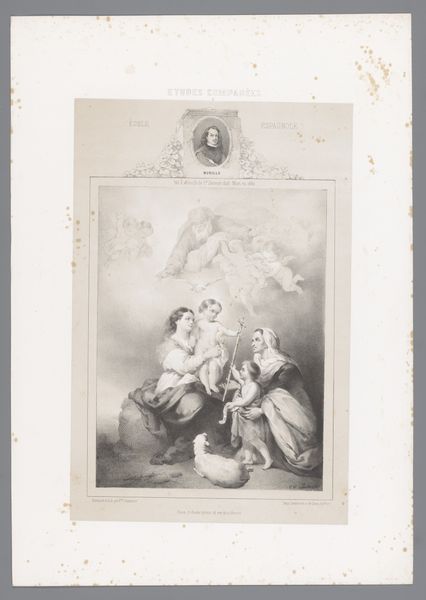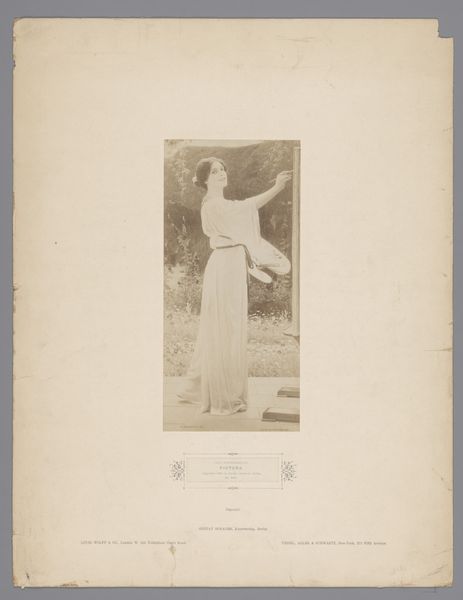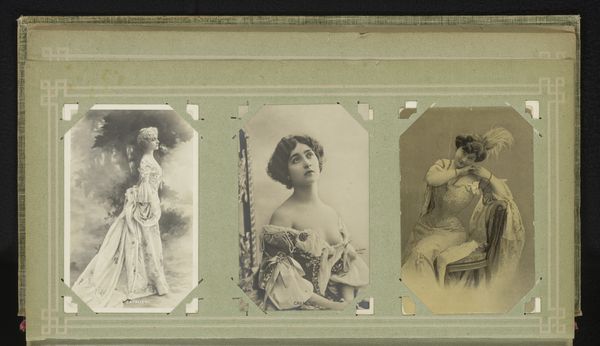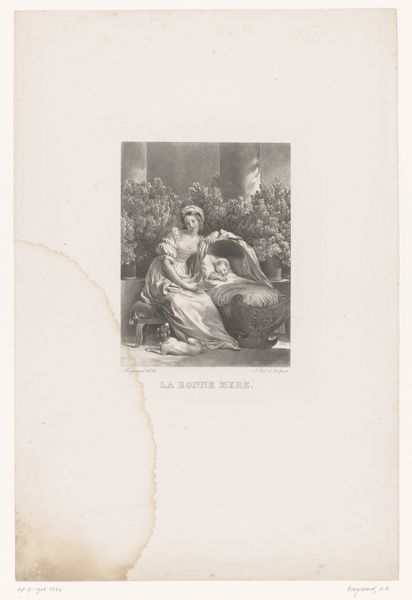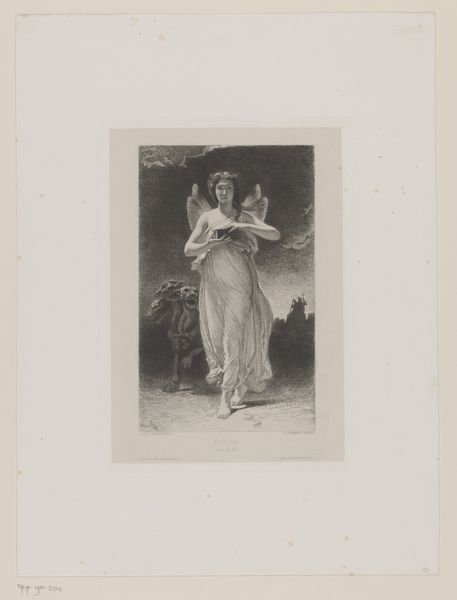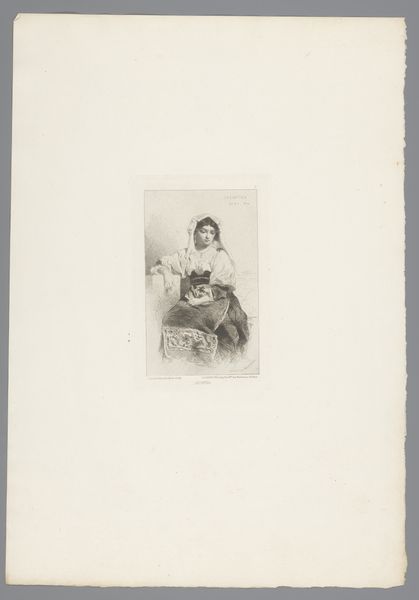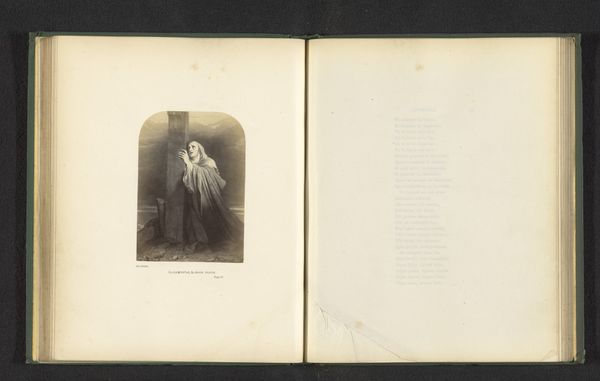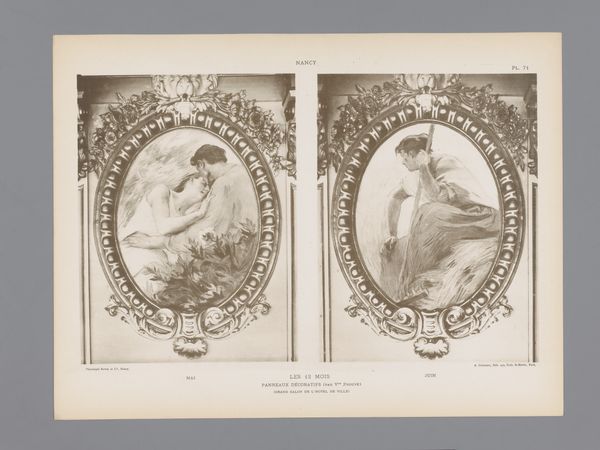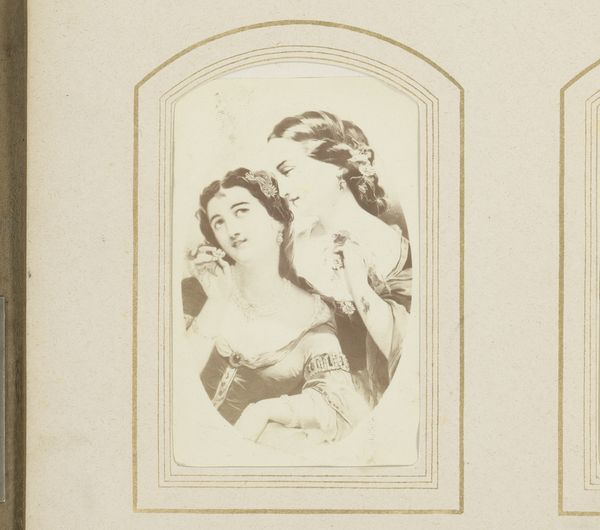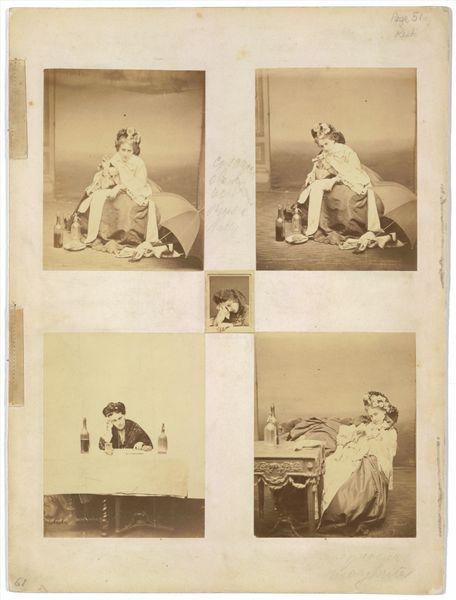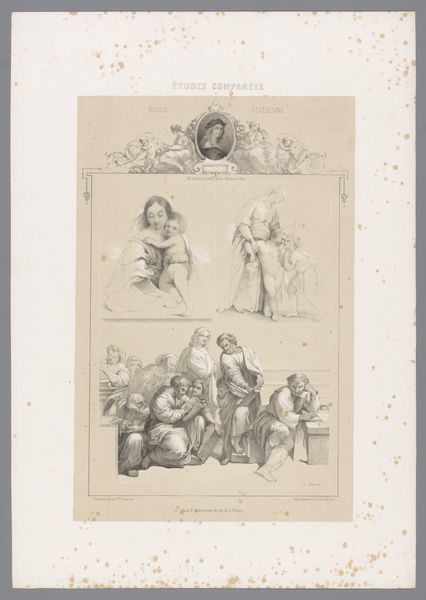
drawing, print, etching, paper, graphite
#
portrait
#
drawing
# print
#
etching
#
paper
#
graphite
#
history-painting
Dimensions: height 449 mm, width 315 mm
Copyright: Rijks Museum: Open Domain
Curator: Right, let’s have a look at “Studies naar schilderkunst van Guido Reni” by Charles Nicolas Lemercier, created around 1850. We have a drawing rendered through etching, graphite, and printmaking on paper. My first thought: it feels academic, and precise. Editor: Academic is a good word. Immediately, the reproduction catches my eye; specifically how this collection of drawings points toward the circulation of artistic ideas within the context of 19th-century artistic training. Curator: Absolutely, this wasn’t about individual artistic expression, but about mastering established techniques. We see Lemercier’s intense engagement with Reni, not simply to copy, but to dissect his technique for students to use as reference. The material quality, the mass-produced nature, puts this firmly in the camp of pedagogical tool, rather than precious artwork. Editor: Precisely! Consider also the politics embedded within art academies of the era, the hierarchy, and the systems of patronage. How would access to affordable prints like these impact that structure? What did this democratization of “master” techniques achieve, and what might have been lost? Curator: And speaking of materials, notice the way graphite and etching interact. Graphite for the finer details, the initial sketch, then etching to reproduce those details uniformly and make them permanent. How that etching then alters the ‘feel’ of the lines, it's almost mass produced with care. Editor: That tension between the individual act and its mechanical reproduction is quite central. Think about the labor involved. A workshop probably churned these out to make art knowledge circulate. Also how the artwork seems like a scientific analysis and an homage—Reni as a subject of study but also elevated on a pedestal above the masses thanks to these printed disseminations. Curator: So we have here something more than just skill building, we are witnessing a system where a canon gets made, a specific way to produce acceptable work, both disseminated and concretized by these very accessible prints. The act of art became standardized, yet hopefully inspired a few on their path to a career. Editor: Precisely. I leave this encounter now considering both the tangible—the etching process, the paper itself—and the larger, institutional structure within which Lemercier's work operated.
Comments
No comments
Be the first to comment and join the conversation on the ultimate creative platform.

